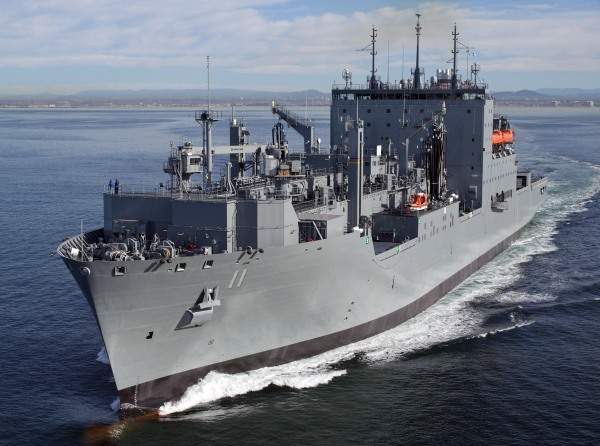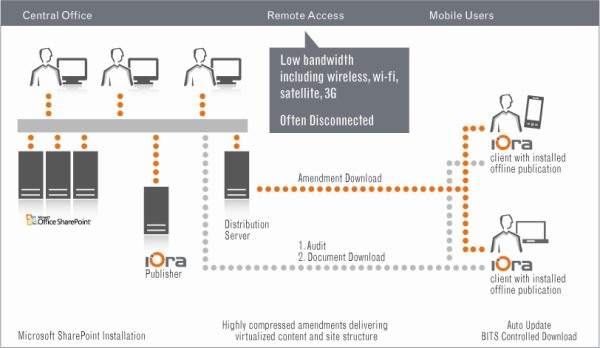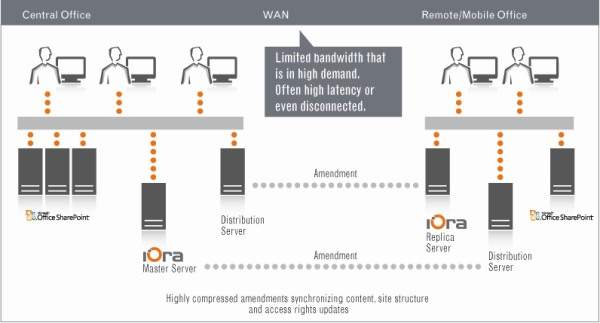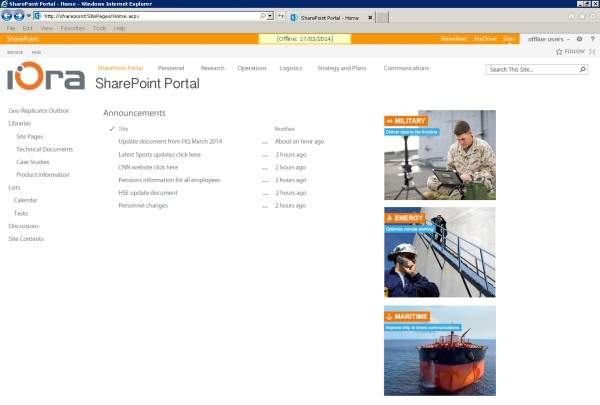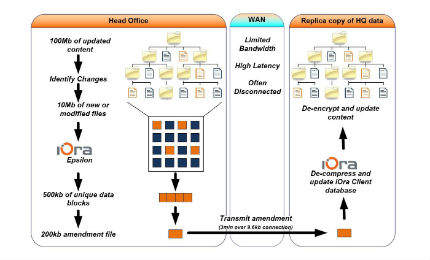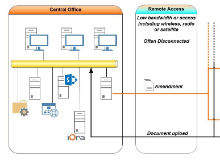With ever-increasing demands for data exchange and the commensurate pressures on available bandwidth, iOra provides portal and file-based compression and replication solutions for improved at-sea access to crucial operational data, training and maintenance manuals, and administration documentation, thus enabling more effective and efficient collaboration between personnel on-board and staff ashore through the availability of more up-to-date portal content.
Organisations that operate routinely in the most demanding operational environments choose and trust iOra to ensure that their data exchange strategy is consistent and guaranteed at all times.
Document compression and data replication
iOra’s patented compression technology, Epsilon, compresses documents up to 99.9% and Geo-Replicator® replicates data between Microsoft SharePoint servers, or by creating virtualised servers or web applications for mobile users.
Vessels in geographically distributed locations operating at the edge of data-exchange webs are able to communicate more effectively over global, satellite-enabled systems and HF / VHF / UHF / VLF networks – even if they are periodically disconnected, have limited bandwidth or high latency – thus enabling near-real time operational continuity. As a result, Commanders have uninterrupted access to mission-critical information anytime and anywhere, providing a single point of truth in all operations.
iOra’s data compression and replication software makes it possible for military personnel to actively share information within a C4I environment across networks that have high latency, constrained bandwidth or intermittent availability.
iOra’s technology has been successfully integrated on tens of thousands of machines by military units, delivering data replication over bandwidths as low as 2kbps to disconnected users.
Epsilon – patented data compression engine
iOra’s patented compression engine, Epsilon, is the fundamental component of efficient replication operations. It is essential that the data to be sent over the network is minimised to execute best replication. Compression of data updates becomes particularly important where the network connection is challenging or where the end user is operating at the edge of the corporate network. Epsilon is the enabler for introducing new data-sensitive applications to remote users who would not be able to access data without efficient data transport.
Geo-Replicator – data replication technology
Geo-Replicator scopes the data to be replicated and the process for delivering updates. Reports can be generated to detail the content replicated or the update status of specific end users. Administrators can set operational rules to apply automatically to manage the effects of replication in terms of managing data conflicts with conflict resolution in Server-to-Server networks.
Template files can also be configured to control the manner in which Geo-Replicator manages the captured content when disconnected from the network for web applications. Once all of the individual pages (and the rules for handling them) have been identified, an exact replica of the information is prepared for delivery to the remote user. There is no need for re-coding or re-development in Geo-Replicator; it is the very same pages that are used offline as online. Once this initial batch of content has been downloaded onto the user’s laptop, the user can then work with the web pages through a standard browser. All the functionality that the user would expect online (e.g. search) is available on the laptop, whether it is connected to a network or not.
iOra Geo-Replicator operational modes:
Server-to-Server (S2S)
The master and replica servers check against their local content repositories on an update schedule that is dictated by the volatility of the data. Scheduled operation ensures that server peak usage can be efficiently managed and avoids potential system overflow that can occur when triggering incremental replication on each and every server update event.
Geo-Replicator uses the SharePoint platform API to read and write the structure, content and access rights changes on the master and replica. The update amendments that are passed between the master and replica server benefit from the high levels of compression that can only be achieved by the Epsilon technology. Hence the network connection that is required to connect master and replica can be anything from 1kbps to 100Mbps. In the same regard the bandwidth used by the replication phase is dramatically reduced.
Server-to-Laptop (S2L)
iOra’s software ensures offline mobile and field workers dependent on laptop connectivity have exactly the same experience as they would if working at Head Office. Whilst offline web page links in web pages work, when online documents can be updated and full search of the offline content is available.
Server-to-Virtual Server (S2VS)
This solution is specially designed as an alternative for lightweight, read-only portals for remote offices solving the problem of replicating portal content to remote office environments where the installation and maintenance of a sophisticated server is impractical. iOra is deployed at the server level with the addition of a proxy server, to deliver a web application to a group of users without the requirement for installing backend infrastructure.
Replication monitoring interface
iOra’s Edge replication technology monitors the health and status of iOra Geo-Replicator, monitoring both local and remote deployments.
iOra Edge provides a monitoring interface that can either be used as a high level digital dashboard for users who solely want to assess operation status for all connected nodes of the network, or an interface that additionally provides the drill-down capability to support fault finding and problem resolution.
iOra Edge gives a company’s HeadQuarters and Network Operation Centre full reassurance that their fleets have the latest critical orders before exercises and missions, removing time and uncertainty issues.


